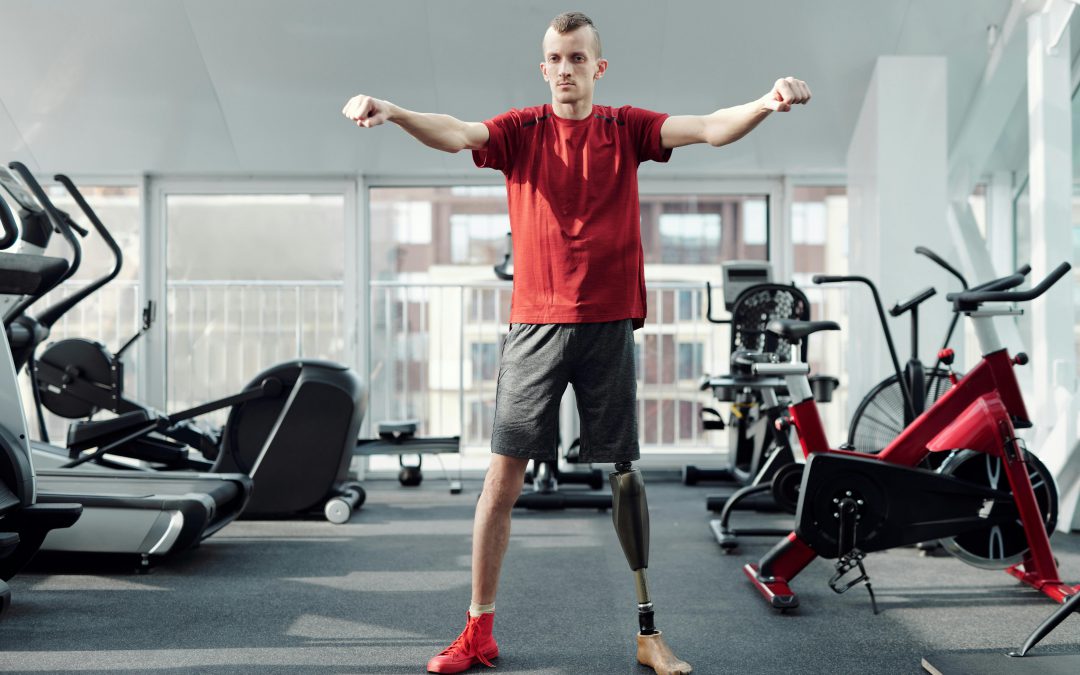Disabilities come in many shapes and forms, including physical, learning, mental health, and sensory impairments. In this article, we’ll focus specifically on how employers can support employees with physical disabilities in staying active for better health, wellbeing, and job satisfaction.
What is Disability History Month?
Disability History Month is an annual awareness month, observed from 22nd November – 22nd December. It’s an opportunity to raise awareness of the many different types of disabilities, celebrate disabled individuals, and promote equality and inclusion in the workplace. Disability History Month is a time for reflection and action, and for employers it’s a great opportunity to consider how they can create a more supportive environment for their disabled employees.
Understanding the challenges of living with physical disabilities
Physical disability encompasses mobility limitations, chronic illnesses, conditions affecting motor skills and much more. Living with physical disabilities can pose challenges when it comes to staying active, but people with disabilities deserve to enjoy the many mental and physical benefits of exercise.
Employers can help people with disabilities stay more active both in their daily routines and also in terms of formal physical exercise. People with physical disabilities might face difficulties in accessing traditional fitness facilities, engaging in exercise routines, or navigating daily activities such as commuting or office navigation. It’s important to understand the barriers so you can support their efforts to stay active.
Common barriers to exercise for people with physical disabilities
- Accessibility – many gyms and recreational areas lack adequate facilities or equipment for physically disabled individuals, limiting their opportunities to engage in exercise.
- Lack of suitable programming – generic fitness classes or activities may not meet the specific needs of those with physical impairments, making it challenging to participate fully.
- Transport – difficulty in travelling to fitness locations can deter individuals from pursuing regular exercise.
- Social perception – stereotypes about disabilities might leave people with disabilities feeling less confident about engaging with exercise.
Best forms of exercise for people with physical disabilities
As part of your internal strategy to support and facilitate physical activity for disabled employees, think about forms of exercise that might suit those colleagues. Consider effectiveness, accessibility, safety, and enjoyment. Here some examples, but there are plenty more.
Mobility impairments – swimming
Water supports the joints, reduces strain, and provides resistance whilst giving a combined cardiovascular and strength workout, making swimming a great option for those with mobility challenges.
Wheelchair users – personal training
Strength training with a personal trainer or in a small group training setting that can be adapted in a way that allows for the exercises to be completed while seated in a wheelchair.
Chronic pain condition – yoga
Different styles of yoga support flexibility, balance, and relaxation to reduce back pain with gentle resistance training.
Motor skills – strength training
Resistance training with fixed machines or resistance bands helps to build muscular strength and improve motor function in a controlled environment.
How employers can support disabled employees increase physical activity
Employers play a vital role in facilitating physical activity among disabled employees. The best way to offer a fitness benefit that suits all employees is to choose a platform that gives variety and choice. Hussle’s nationwide network of gyms, pools, spas, and online fitness classes allows employees to choose facilities and forms of exercise that suit their needs so they can exercise in confidence and comfort.
Here are some more ideas that you might wish to consider in order to support your disabled employees in staying more active:
- Accessibility improvements – make sure company facilities are accessible and adapted to help all employees be more active during the working day.
- Inclusive fitness benefits – choose fitness benefits that prioritise choice, variety, and inclusion.
- Flexible working hours – can you help facilitate flexible schedules so employees can incorporate more physical activity into their routines?
- Transport assistance – can you offer transport solutions or subsidies to help employees reach fitness venues comfortably?
- Visibility – consider appointing disability wellness champions who can lead by example and provide peer-to-peer support, increasing awareness and encouraging dialogue.
Bring the benefits of fitness to your diverse workforce
Hussle could provide your employees with access to thousands of gyms, pools, spas and fitness centres across the UK with just one hugely discounted pass.
We offer fitness benefits that can support your disabled employees in choosing when and where they exercise. Through the integration of these inclusive fitness benefits, you’ll empower your disabled employees and set the foundation for a more equitable workplace culture.
Get a quote today and see how Hussle’s fitness benefit offer can help you to become a more inclusive employer.



